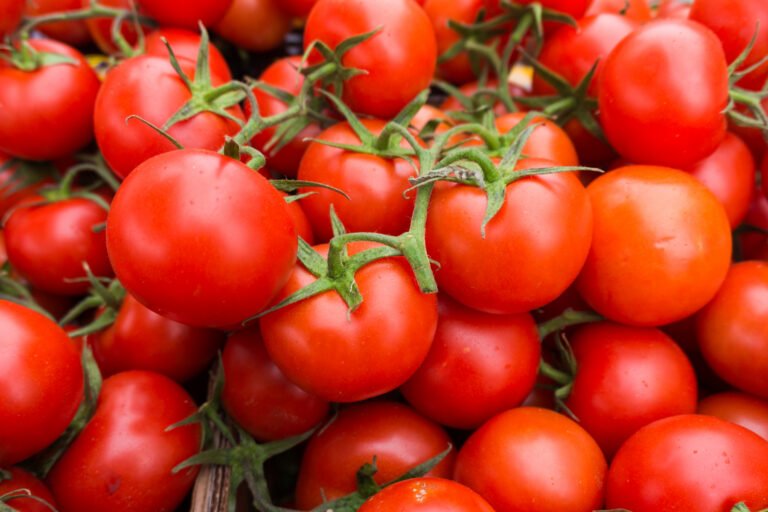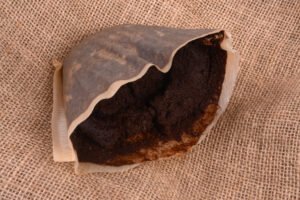There is a popular myth that citrus fruits cannot be composted due to their acidic nature, and sometimes tomatoes are included in this list too. Tomatoes are acidic, yet they are not in the citrus family and may be helpful to your soil. But how exactly? Can tomatoes be composted? Let’s dig in!
Key Takeaways
- Tomatoes can be composted when used in moderation. They are rich in potassium and are a vital part of green material in your compost.
- You can easily compost tomatoes through the Hot composting, Tumbler Composting, and Vermicomposting methods; you can learn the stepwise procedures below!
- It’s recommended to add lime or eggshells and supplement the compost with adequate brown materials to buffer the acidity in tomatoes.
- Tomato compost can be used to fertilize acid-loving plants. For more benefits, uses, and tips for composting tomatoes, read along!
How to Compost Tomatoes?
Tomatoes are nutritious red fruits high in water and nutrients that can improve soil quality. Though composting tomatoes is easier, there is a chance that tomato seedlings will sprout in the compost. So you must be cautious about pulling them off at the right time.
Moreover, you can compost old, unripe, moldy, or rotten tomatoes, but it’s best to avoid composting diseased ones as they may carry pathogens through the compost to the soil and destroy the garden bed.
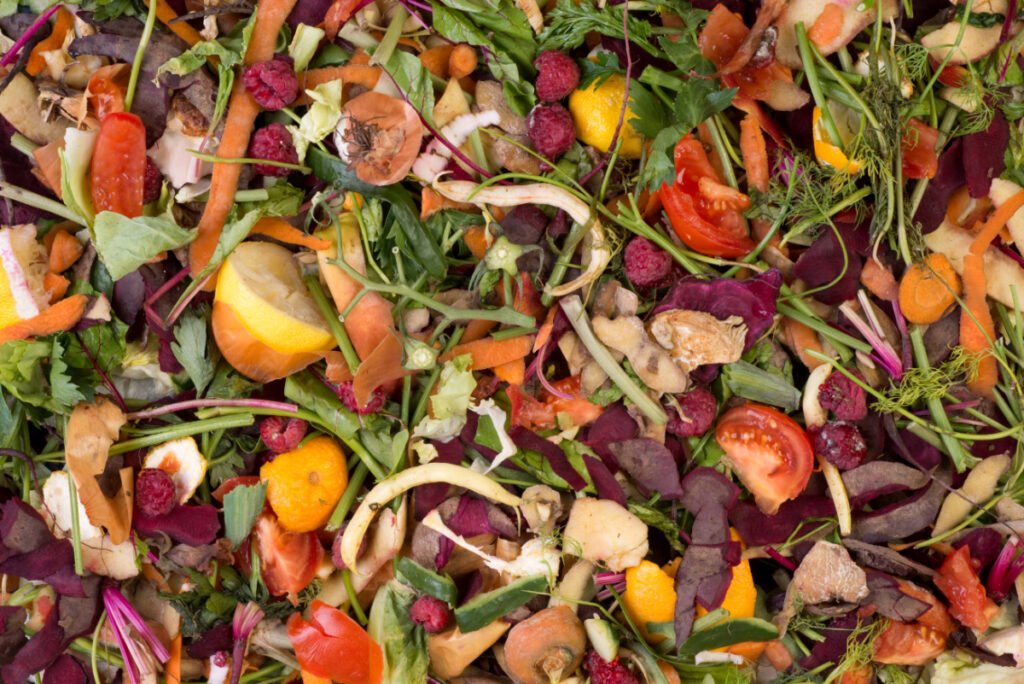
Tomatoes can be composted through hot composting or Vermicomposting. Let us look deeply at how to compost tomatoes using different methods.
Composting Tomato via Vermicompost
Red wigglers love tomatoes as much as they like watermelon, muskmelon, squash, etc. These water-rich fruits keep the worm bin moist and healthy, making their job easier.
If you already own a wormery, toss a few tomato slices into it along with other food scraps. But if you are starting a new worm bin, follow this step-by-step guide!
Step 1. Set Up the Worm Bin
Take a wooden crate or plastic box and make holes across it and cover it with a wire mesh. Place it in a shady spot with minimum disturbance.
Red Wigglers like a dark environment to work on food waste. Hence, the worm bin should not be exposed to much light.
Step 2. Prepare the Bedding
Shred newspapers, cardboard, and tissue paper and spread them evenly in the bin. Then dampen this bedding and cover it with a firm layer of soil to provide grit for the worms.
Step 3. Add Tomatoes with Food Scraps
Chop the tomatoes and mix them with eggshell pieces and other food waste like fruit peels, vegetable peels, coffee grounds, and other non-greasy kitchen waste.
Then cover the bin with gunny bags and let the food materials break down naturally for up to 2 weeks.
Avoid adding meat scraps to the worm bins as they exude a foul odor and might attract pests that will hinder the worms’ functioning.
Step 4. Add Red Wigglers
After about two weeks, add a handful of worms to your wormery. The worms move towards juicy food materials and decompose them.
Cover the bin again to let the worms act upon the food.
Step 5. Maintain the Worm Bin
As the tomatoes contain adequate water, you must be careful about the moisture content in the bin. The worm bin should not get too dry or too wet.
Your tomato fertilizer will be ready within 2-3 months, and you can start a new batch using the same process after harvesting the vermicast.
Dry the compost for 2-3 days before using it for plants, and store it in the bags to nourish your garden for the entire season.
Composting Tomatoes via Hot Composting Method
The hot composting method is widely used for faster composting. It requires a balance between four major components, i.e.
- Carbon-rich browns (dry leaves, hay, sawdust, wood chips, paper)
- Nitrogen-rich greens (grass clippings, food scraps)
- Moisture (Water)
- Air (Oxygen)
Moreover, you must maintain at least 140°F temperature to kill harmful pathogens spreading from tomatoes. Maintaining this temperature will also kill the tomato seed to avoid growing unwanted plants in the compost bin.
You can use compost bins or compost tumblers to compost tomatoes through the hot composting method.
1. Composting in Compost Bin
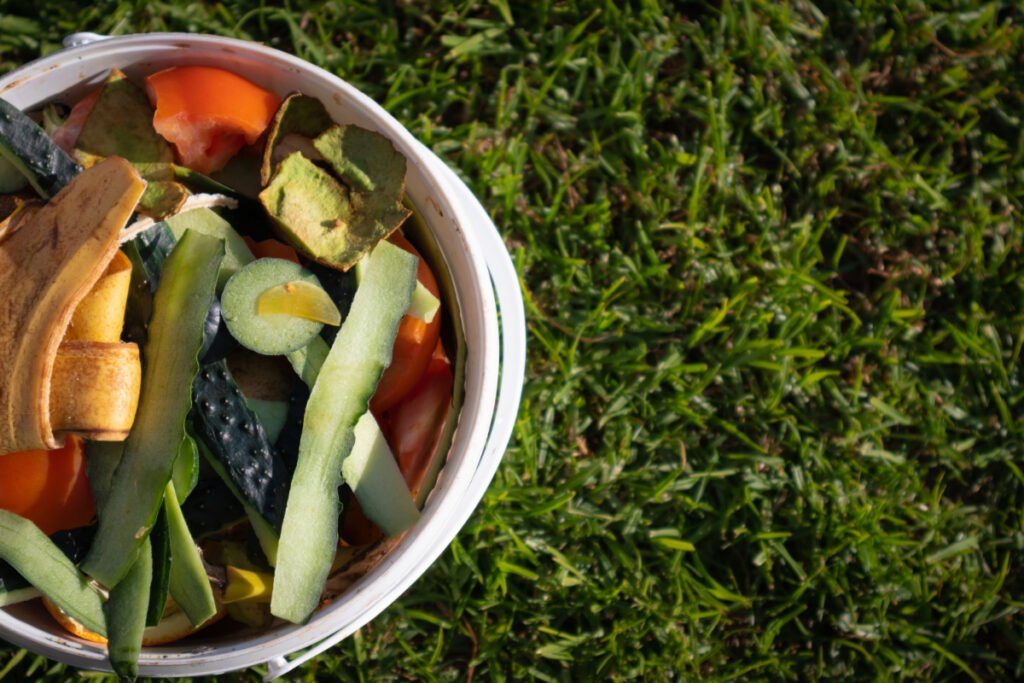
Composting via a compost bin is a popular method used for ages. If you have a compost bin ready, toss a few tomato slices and let nature work on them. But if you are starting it from scratch, follow the given steps!
Step 1. Set Up the Compost Bin
Make a compost bin out of a plastic or wooden crate by poking holes in it. Make sure it has a lid to keep heat in and animals out of the compost. Place the compost bin in an area that receives a lot of sunshine.
Step 2. Make Bed Using Brown Materials
Break/shred the brown materials into tiny pieces and spread them evenly on the bottom of the bin. Brown materials act as food for the microbes and absorb excess water in the compost pile.
Step 3. Add Green Materials
Mix the tomato slices with other chopped green materials, add a layer of them over the brown material, and dampen it.
Step 4. Repeat the Layers
Fill the compost bin by alternating between the brown and green layers and seal them with a firm layer of soil. You can also add manure to accelerate the process.
Step 5. Maintain the Compost Bin
Turn the compost heap using a pitchfork to generate heat if the compost cools down. It also helps raise the temperature in the bin.
Also, regularly check the compost pile’s moisture and water it accordingly.
If the compost is soaked in water, add more brown materials to it. And if it’s dry, add greens.
Use a thermometer and moisture meter for best results. Moreover, since tomatoes are acidic, you can add lime to neutralize them if you dump too many tomatoes into the bin.
Within 3-4 months, your compost will be ready, and you can use it in your garden soil.
2. Composting Tomatoes through Compost Tumblers
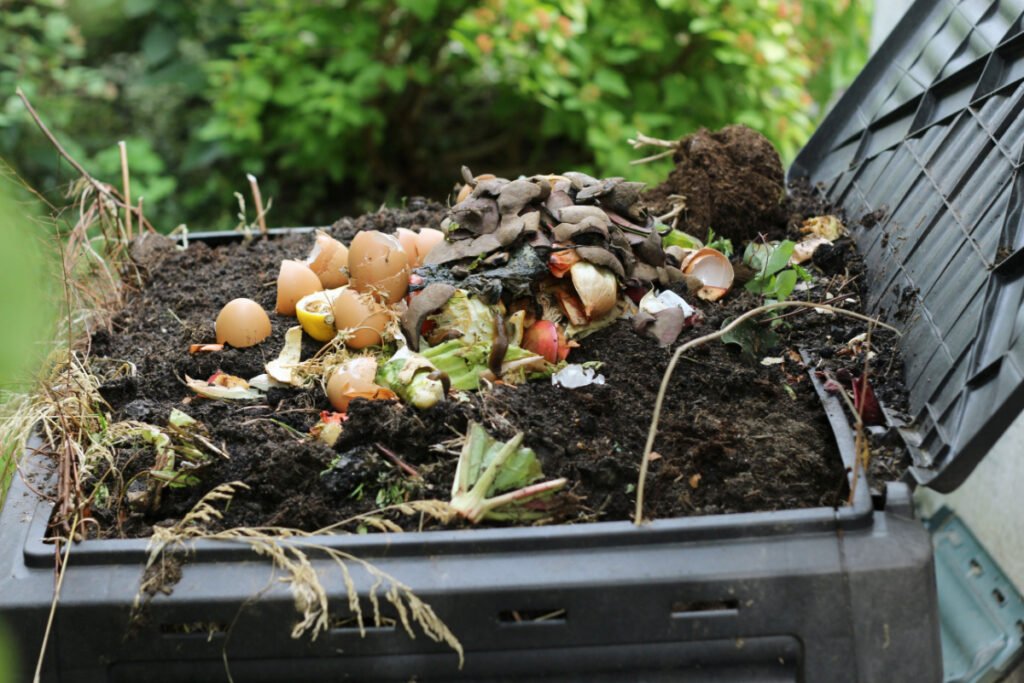
Compost tumblers are yet another easy and effective method of composting tomatoes using heat. Let us look into the process of composting tomatoes using tumblers.
Step 1. Set Up Your Tumbler
Get a tumbler online or from the gardening store and place it in your backyard. If you already have one, clean it properly before tossing the materials.
Step 2. Chop Tomatoes into Smaller Pieces
Wash the tomatoes and cut them into small pieces to hasten decomposition.
Step 3. Collect Green and Brown Materials
Gather some brown materials from your backyard and cut them into small pieces. Then collect some green materials like grass clippings and food scraps and mix them with tomato pieces.
Step 4. Add Composting Materials to the Tumbler
Mix the brown and green materials and add them to the tumbler. Now turn the tumbler to mix the ingredients well. Sprinkle water over the materials and close the lid.
Fill only 80% of the composting tumbler with composting materials to keep it aerated and heated.
Step 5. Maintain the Tumbler
Do not add additional composting materials once you close the lid. This will quicken the composting process. Turn the tumbler once every 3-4 days to maintain a high temperature.
You will get the finished compost within a few weeks, and then you can add the next batch of composting materials to the tumbler.
Can you Compost Tomato Plants?

Healthy tomato plants can be composted through the hot compost method after chopping them finely. You can use tomato leaf, fruit, tomato vine, or any other plant matter for composting as long as it’s disease-free.
But most tomato plants are susceptible to diseases like fusarium wilt, verticillium wilt, bacterial canker, septoria leaf spot, or tomato blight. They can thrive even after composting and carry the disease to the crops through compost.
So it is not recommended to use tomato plants for composting at home. Also, tomato plants take a while to break down, somewhere between 3-12 months, depending on the ideal composting conditions.
So, you need to maintain a temperature between 131 and 170°F while composting tomato plants to kill the pathogens and accelerate the decomposition process.
Moreover, it is recommended not to use compost made from old tomato plants for your tomato garden or other vegetable gardens.
Benefits of Composting Tomatoes
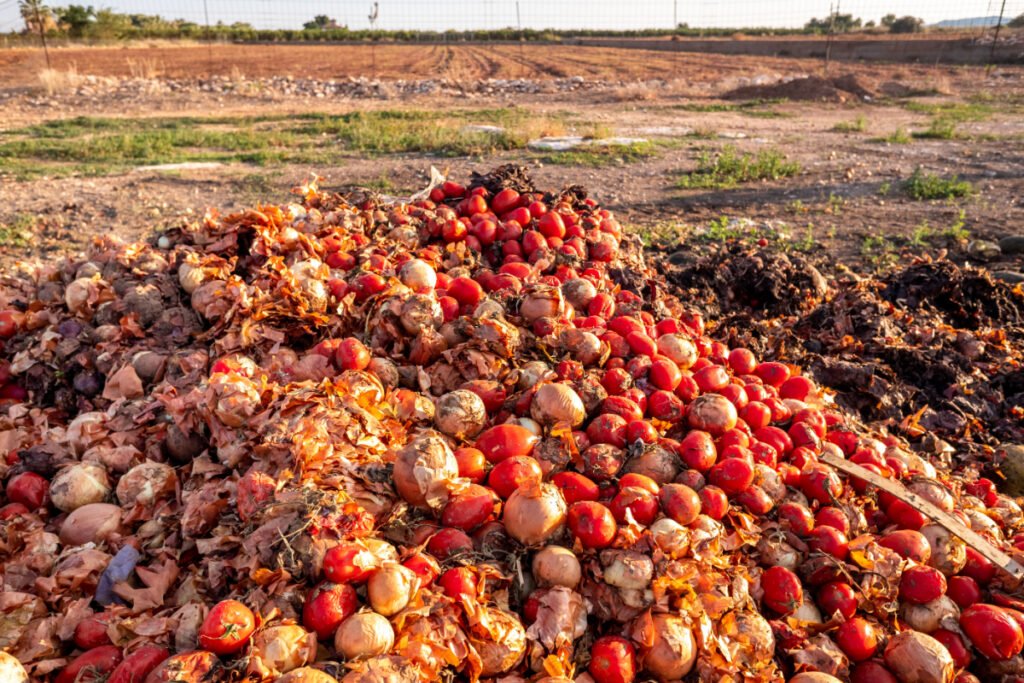
Composting tomatoes comes with several benefits. Here are a few benefits you must know:
- Tomatoes are rich in Potassium and other vital nutrients and add organic material to your soil.
- Tomatoes are acidic; thus, tomato fertilizer can be used for acid-loving plants.
- By composting tomatoes, you can save waste from going to landfills.
- Composting tomatoes is easy, cost-effective, and a substitute for synthetic fertilizer.
- Tomatoes add moisture to the compost and break down quickly.
Additional Tips for Composting Tomatoes
Composting tomatoes is an excellent way to reuse them for your garden. But you might not get the best results if it’s not done properly. So, here are some essential tips to compost tomatoes effectively:
- Avoid using chemically treated tomatoes for composting. If your tomatoes are not organic, wash them in hot water first.
- Cut tomatoes into smaller pieces before adding them to the compost and remove their stems and leaves. However, you can add cherry tomatoes as a whole.
- As tomatoes are acidic, add lime or eggshells to neutralize the pH of the compost.
- Remove the tomato seedling before composting tomatoes to avoid the sprouting of a tomato plant. The seedling may also become the source of weed seeds in your garden.
- Add brown materials like shredded paper, cardboard, newspaper, or dried leaves to soak excess water in tomatoes and balance the compost.
- Turn the compost to generate heat if using the hot composting method.
- Do not compost tomatoes from diseased plants or old plants carrying fungal spores.
Can you compost whole tomatoes?
Yes, you can compost whole tomatoes along with tomato vine and leaves. Tomatoes are filled with water and break down quickly, making them an ideal composting material. But if you want your compost to be ready soon, it’s best to compost chopped tomatoes.
Can I use tomato compost for other plants?
Yes, as long as you are composting healthy tomatoes, you can use tomato compost to fertilize other crops. Tomatoes make good compost as they are rich in nutrients.
Can I reuse compost from tomatoes with blight?
No, it is not recommended to reuse the compost from tomatoes affected by blight. Tomato blight is a soil-borne disease that can spread through your compost to tomato plants and other solanaceous crops like potatoes and eggplants in your garden and damage them.
Can you put rotten tomatoes in a compost pile?
You can use rotten tomatoes in your compost as rotting indicates the decomposition has started. Composting rotten tomatoes will, in fact, accelerate the decomposition.
Is tomato brown or green part of compost?
Tomatoes are considered green composting materials as they are rich in water content. So, mix them with brown materials to balance the compost.
Like many other fruits, Tomatoes can be composted as they are rich in nutrients and water. However, make sure to add them in moderation as they are acidic and may alter the pH of your compost. And lastly, avoid composting fruits affected by pathogens or diseased plants.
So, next time you see any waste or rotten tomatoes in your fridge, do not have a second thought; just compost them. And if you are worried about rotting banana peels in your trash bin, you can compost them too. Join us to know how!
Happy Composting!
